
Railroad tie retaining wall costs can vary widely, so getting an accurate estimate for your needs is a good idea to set your budget appropriately.
Design your dream garden from scratch


Perennials are a gardener’s best friend: They return every year looking bigger and better and can be very low-maintenance once established. When planning your perennial garden, keep these ideas and tips in mind to build the garden of your dreams—or at least one that will make your neighbors green with envy.
Testing your soil before planting your perennial garden can help determine if you need fertilizer or soil amendments to create a healthy environment for your plants. You can use a soil test kit, but there are other DIY methods you can choose from as well.
The vinegar and baking soda test is one DIY method. To determine your soil's pH balance, take two samples of about ½ cup each. To one sample, add ½ cup of vinegar. If the sample fizzes, you have alkaline soil and may need to add ground sulfur to balance it out.
Add enough distilled water to the other sample to make the dirt into mud, then add ½ cup of baking soda. If it fizzes, you have acidic soil and may need to add some finely ground limestone to balance the pH.
If you hire a landscape architect or designer, they can recommend the types of plants you should choose based on the soil test results.
Whether you have one perennial bed or 10, your garden plan should account for a true botanical showstopper. This might be an ornamental evergreen, a dwarf flowering tree, or a glorious hydrangea. Not every garden bed needs a showstopper, but give your garden at least one larger, established focal point.
When shopping for perennials to fulfill your flower bed ideas, always consider buying more than one of the same plant to give that natural robustness to your perennial bed. For instance, instead of planting one beautiful fountain grass, plant three together in a group so they have enough room to grow and pack a bigger punch visually.
Place groups of the same plant together, maybe around a showstopper shrub or tree, and you have a master gardener formula for your yard. Planting in groups also makes a bolder statement and is more appealing to the eye from a visual perspective.
One of the biggest mistakes gardeners make in their perennial beds is planting full-sun plants in partial shade or partial-shade plants in full sun.
Before you invest in a lot of new blooms, take some time to record your yard’s sun-shade ratio: Does your bed get morning sun only? All-day sunshine? The time of year, leaf coverage of nearby deciduous trees, and your garden hardiness zone will also affect the light patterns.
“It’s also important to note afternoon sun and morning sun,” says Tara Dudley, Angi Expert Review Board member and owner of Plant Life Designs. “Morning sun is a lot less harsh on plants than afternoon sun, so when planning your garden, be sure not to put any partial sun plants in the full afternoon sun.”
If you’re unsure where to start, a local landscape designer can help you choose the best plants for the sunlight patterns in your yard and plan the rest of your perennial garden.

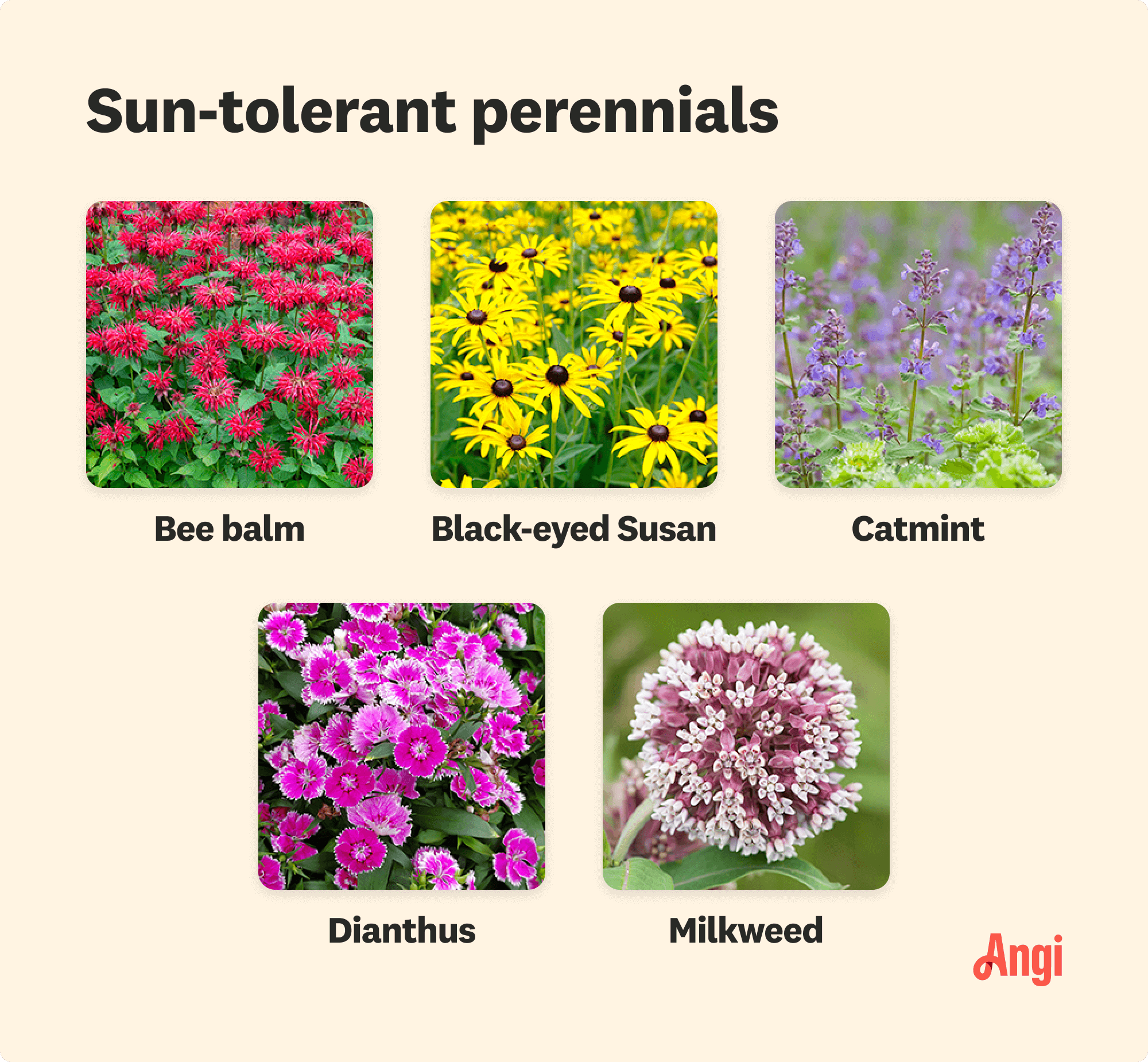
Because most homeowners purchase perennials early in the flowers’ life, it’s hard to tell what they will look like in a year, two years, or even 10. An easy solution: Read those labels!
Height variation can make a perennial bed fabulous, but not if the tall plants obscure the beauty of the smaller ones. So place taller plants toward the back or center of the beds and keep the shorties up front. As a bonus, if you keep their final height in mind, you can strategically use plants to hide a transformer box or other utilities.

Another fantastic way to add instant height to any garden is to include containers within a planted bed. Add one or two taller planters as focal points with something striking inside, like tall grasses and trailing plants.
Planting various plants with different textures gives your perennial garden a dynamic element without relying on blooms. Reedy grasses look great next to broad-leafed perennials, and dark purple leaves are a striking contrast with silvery foliage. Play around and see which combos you love.
Nature is made up of soft edges and curved lines, so mimicking these shapes in your perennial garden can make it look natural like it grew there of its own accord rather than being planted there. If you can work landscape curbing costs into the perennial garden budget, this landscape edging can create defined garden beds that curve and bend to follow the flow of the property.

If everything in your garden blooms at once, you’re left with a primarily green bed for the rest of the season, which is no fun. Planting a variety of flowers that bloom from early spring (daffodils, Narcissus) and summer (coneflowers, Echinacea) to late summer (dahlias) extends the beauty of your garden.
And don’t forget plants that put on a fabulous show in the fall, like grasses that turn red (Prairie Fire red switchgrass, Panicum virgatum) and shrubs that show off their autumnal colors (Ninebark, Physocarpus).
Planting flowers that turn your backyard into a wildlife sanctuary and attract butterflies and bees ensures more blooms and deters pesky insects that destroy your foliage.
Some pro-pollinator plants include purple coneflowers (Echinacea purpurea), bee balm (Monarda didyma), Russian sage (Perovskia atriplicifolia), and Yarrow (Achillea millefolium).
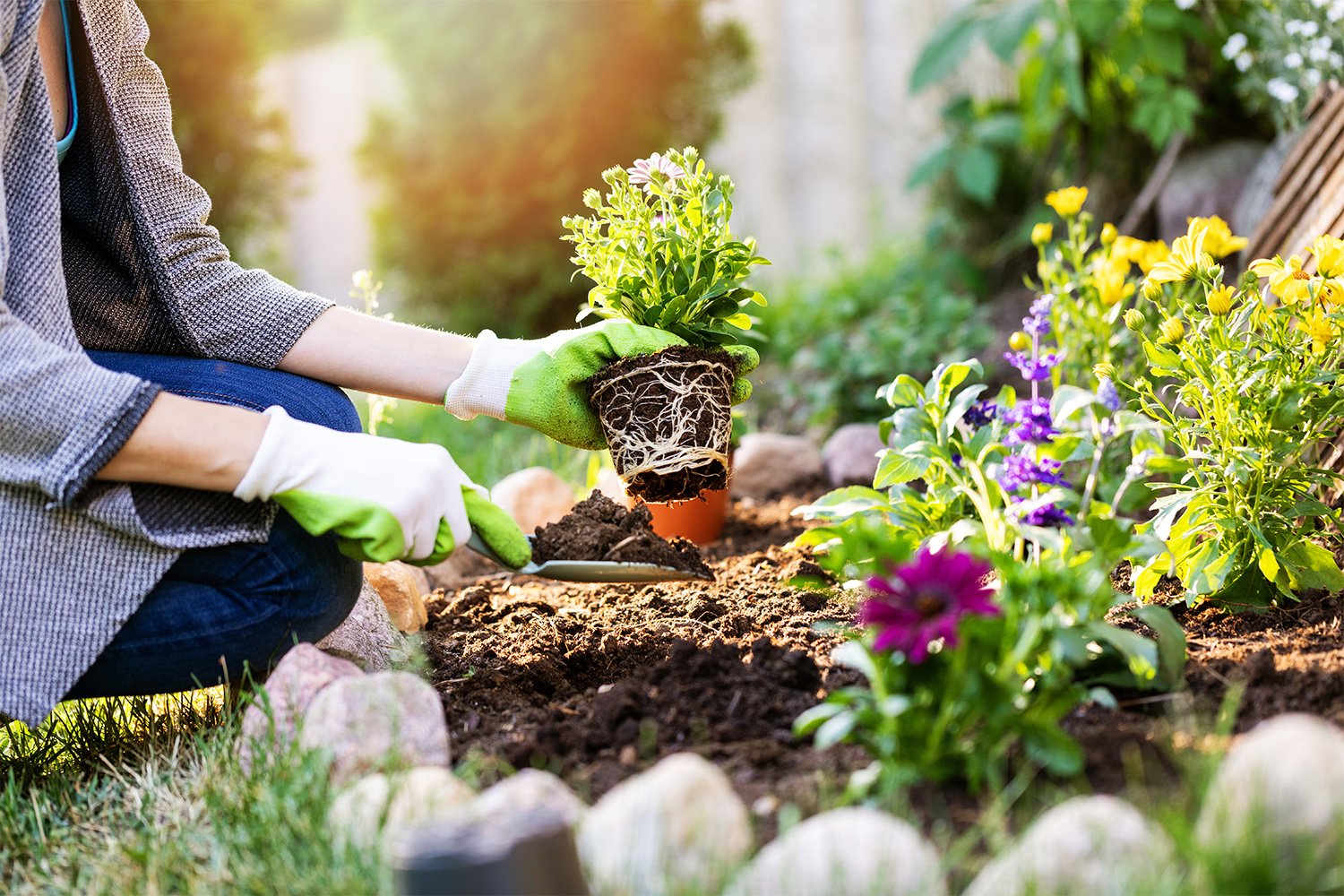
The secret to a perennial garden isn’t only relying on perennials: Well-placed annuals can add instant color and help fill in the gaps while your perennials grow, helping to prevent overcrowding. This contributes to the overall health of your flowers. Just remember to pick annuals with the exact light requirements as your perennial bed.
Chances are, you inherited some existing plants with your home garden. Don’t be afraid to move, transplant, divide, and just completely change out plants if they don’t work. Take a walk around your neighborhood to see what does well—just be sure to factor in light patterns when you do.
Did you know that cutting back blooms encourages more to blossom? Light pruning and deadheading during the blooming season will help your flowers last longer. Proper perennial and shrub pruning in the fall results in more significant, healthier growth come spring.
Those truly fantastic perennial gardens you see, whether native plants or exotic cultivars, all likely have one thing in common: They are adequately fertilized and mulched.
Mulching your garden bed in spring can help combat weeds and retain moisture, and mulching in fall can help insulate plants from harsh winter weather. Fertilizing at least once in early spring and again during the growing season ensures your plants get the nutrients they need.
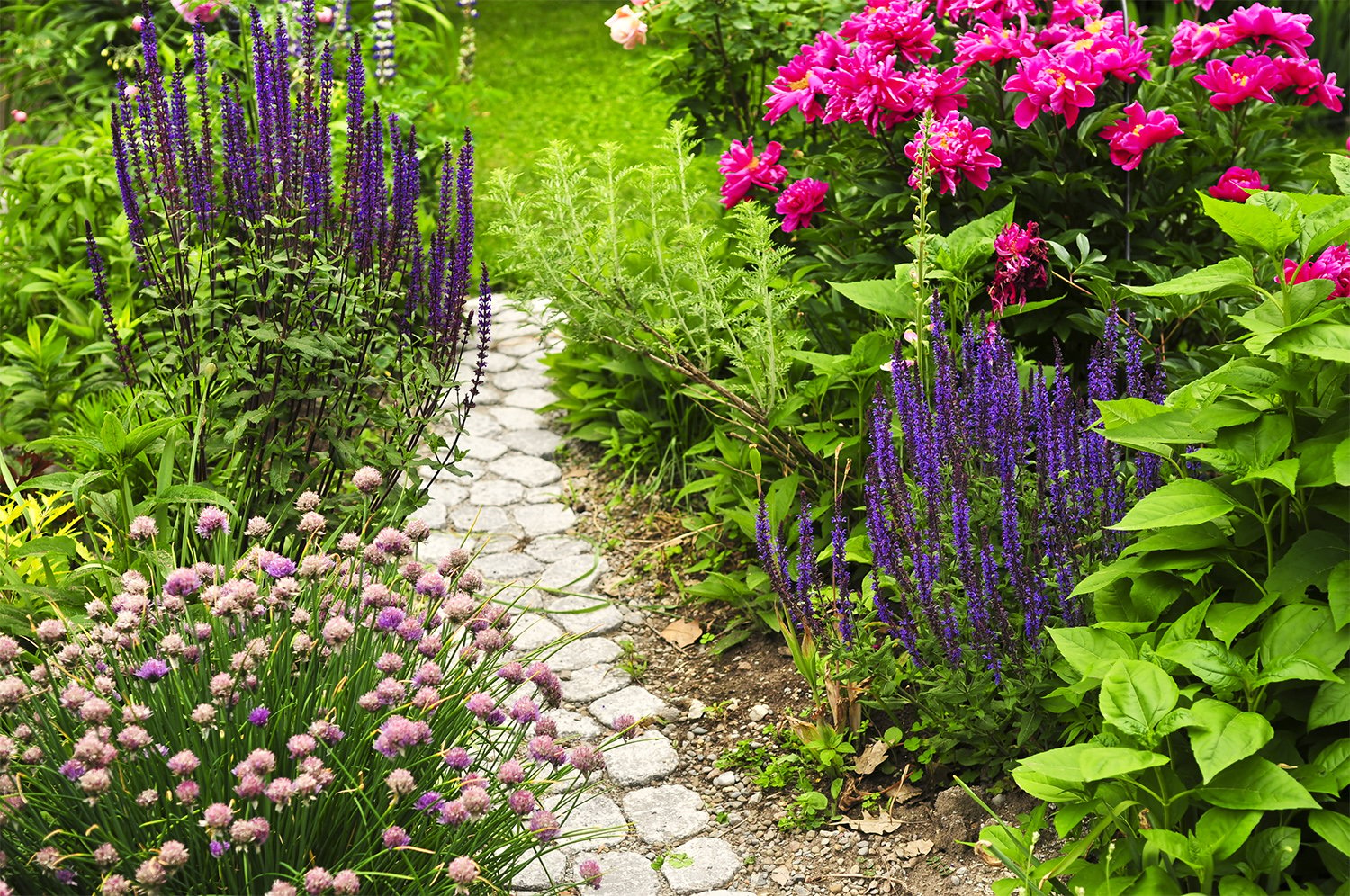
Perennial gardens aren’t just about plants. A few beautiful pieces in your garden, like a birdbath, sundial, or sculpture (garden gnome, anyone?), will lend some personality to your garden. Likewise, well-placed hardscaping, such as stone paths, lends an enchanted feel to any homeowner’s yard. You could also consider adding a greenhouse for growing plants early in the season or converting an existing one for another use, like a seating area or outdoor kitchen.
Amber Guetebier contributed to this piece.
From average costs to expert advice, get all the answers you need to get your job done.

Railroad tie retaining wall costs can vary widely, so getting an accurate estimate for your needs is a good idea to set your budget appropriately.

From your flower beds to your walkway, river rocks make a classic addition to your landscape. Learn about the cost to install river rock to set a proper budget.

Leveling your yard can help with drainage and prevent damage to your home. Learn the cost to level a yard in Columbus, OH, and what factors can affect the price.

Overseeding your lawn can help fill in sparse areas and grow thick, lush grass without starting over. Find out how to overseed a lawn successfully.
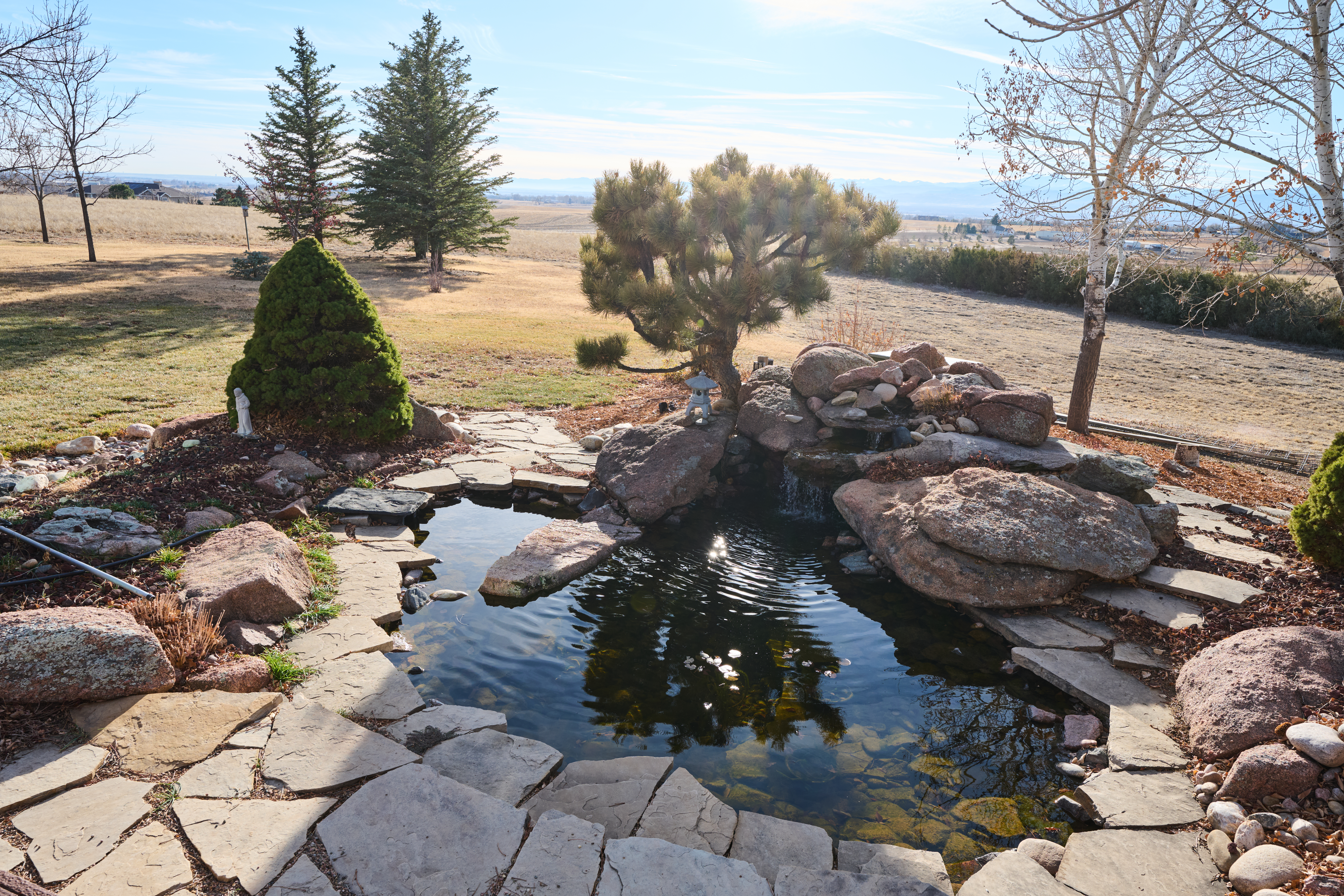
Preparing your pond for the winter can keep it healthy until springtime. Learn how to winterize a pond with this how-to guide.
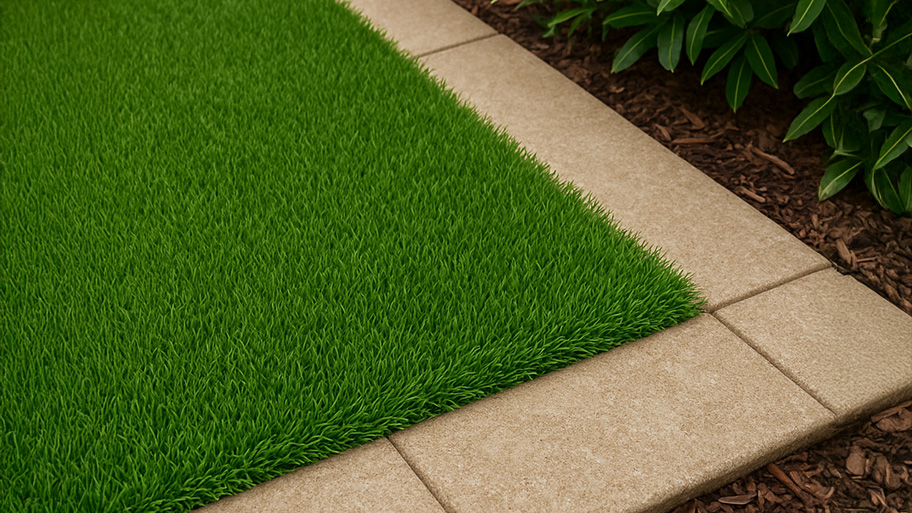
Opting for a natural turf alternative may have its perks, but the problems with artificial grass can outweigh the good. Get to know these common issues before installing.